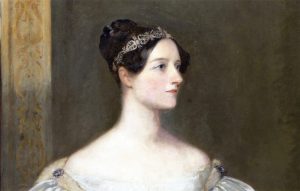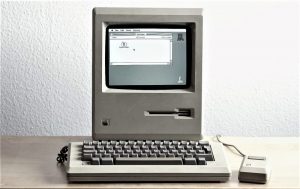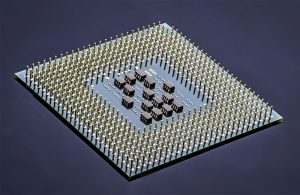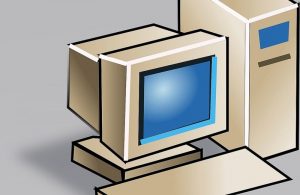Second generation of computers
The second generation of computers covered the period from 1959 to 1964. This generation marked a new era that was defined by the replacement of vacuum valves by transistors, which implied the creation of more reliable computers with less ventilation needs, making them commercially accessible and powerful. In addition, the use of high level languages allowed the improvement in program implementation and its use in airline reservation systems, air traffic control and general purpose simulations. Large companies began to use the computer for storage, registration, inventory management, payroll and accounting.
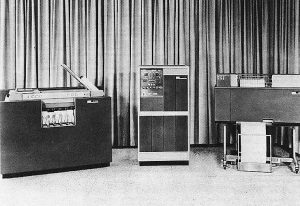
- Date: 1959 to 1964
- Featured Computers: IBM 1401, Honeywell 800 and 5000 Series, UNIVAC M460, IBM 7090 and 7094, NCR 315, RCA 501 and 601
What is the second generation of computers?
The second generation of computers marks a milestone in computer history thanks to the technological advance that meant the creation of transistors to process information to replace vacuum tubes. 200 transistors could be accommodated in the same amount of space as a vacuum tube, a characteristic that made them faster, smaller, and more reliable. Computers began to decrease in size, and small magnetic rings were used to store information and instructions. On the other hand, computer programs that were conceived during the first generation were improved, since new programming languages such as COBOL and FORTRAN were developed.
Characteristics of the second generation of computers
The invention of the transistor made possible a new generation of computers with the following characteristics:
- They were built with transistor electronics.
- They took up less space and produced less heat than computers that operated with vacuum tubes.
- More powerful, more reliable, and less expensive, which made them more commercial.
- They were programmed with high level languages which allowed new utilities in which they could be used.
- They used networks of magnetic cores instead of rotating drums for primary storage, containing small rings of linked magnetic material in which data and instructions could be stored.
History of the second generation of computers
The creation of transistors and their use in computer manufacturing, triggered a series of events in the history of computing, not only because it represented a significant technological advance, but also initiated a new stage in equipment commercialization.
In 1956, IBM sold its first magnetic disk system, the RAMAC (Random Access Method of Accounting and Control). This equipment was characterized for using 50 metal disks of 61 cm, with 100 tracks per side. It had a storage capacity of 5 megabytes of data. IBM developed the first high-level general-purpose programming language, FORTRAN.
Subsequently, in 1959, IBM continued its evolution and created the most successful machine in computing history (12,000 units sold): the IBM 1401 transistor-based mainframe. It used punched cards and a 4000 character magnetic core memory.
By 1960, IBM launched the IBM 1620 mainframe. This transistor-based equipment used a perforated paper ribbon which quickly changed to punched cards. It proved to be a popular scientific computer reaching sales of approximately 2000 units. It used a magnetic core memory with more than 60,000 decimal digits.
A couple of years later, in 1962, Spacewar! was developed, the first computer game. In addition, DEC launched the PDP-1, its first machine primarily aimed at laboratory technicians and research staff.
Finally, in 1964, IBM released the 360 series, made up of computers that were characterized by running the same software in different combinations of speed, capacity and price. It also implemented the commercial use of microprograms, and user-friendly instructions for their use to process many types of data, not just numerical (arithmetic). IBM had two product lines, a “commercial” product line and a “scientific” line, which were unified into one.
Second generation of computer size
The first computers used vacuum tubes and occupied a considerable space (up to 30m long). In the second generation, the size of the computers began to decrease thanks to the creation of transistors to process information. Computers could store more data in less space, 200 transistors could be accommodated in the same amount of space as a vacuum tube. This advance made computers faster, smaller, lighter, more reliable and with less need for ventilation, making them also commercially accessible and powerful. However, acquisition costs remained high.
Inventions of the second generation of computers
Physicists John Bardeen, Walter Brattain and William Shockley, who knowing the properties of the silicon found in quartz stones, after years of research finally conceived the transistor.
The term transistor derives from the combination of the English words transfer resistor, and is an electronic, semiconductor device with multiple functions such as amplify, oscillate, switch or rectify. Its original components were very simple. Each of them was soldered on top of a circuit board that served to connect to other individual components.
They contained a semi-conductor material that could change its electrical state when pulsed. In its normal state, the semi-conductor was not conductive, but when a certain voltage was applied to it, it became conductive and the electric current flowed through it. In computers, they functioned as an electronic switch or bridge.
The creation of the transistor made possible a new generation of computers, faster and much smaller and, moreover, with less need for ventilation. However, the cost remained high. Second generation computers also used magnetic core networks instead of rotating drums for primary storage. These cores contained small rings of linked magnetic material in which data and instructions could be stored.
Inventors of the second generation of computers
William Bradford Shockley (13/02/1910 – 12 /08/1989), the physicist Walter Houser Brattain (Amoy, China, 10/02/1902 – 13/10/1987), and the electrical and physical engineer John Bardeen (Madison, United States 23/05/1908 – Boston, 30/01/1991), were awarded the Nobel Prize in Physics in 1956.
Featured computers from the second generation
In order to create the first flight simulator, the U.S. Navy used second-generation computers. Some of the computers that were already built with transistors in this period were:
- IBM 1401
- Honeywell 800 and 5000 series
- UNIVAC M460
- The IBM 7090 and 7094
- NCR 315
- The RCA 501 and 601
- The Remington Rand UNIVAC LARC and IBM Stretch supercomputers (1961) are also built in this generation, as well as many others, which constituted a competitive market with a boom in its growth.
How to cite this article?
Briceño V., Gabriela. (2019). Second generation of computers. Recovered on 24 February, 2024, de Euston96: https://www.euston96.com/en/second-generation-of-computers/




